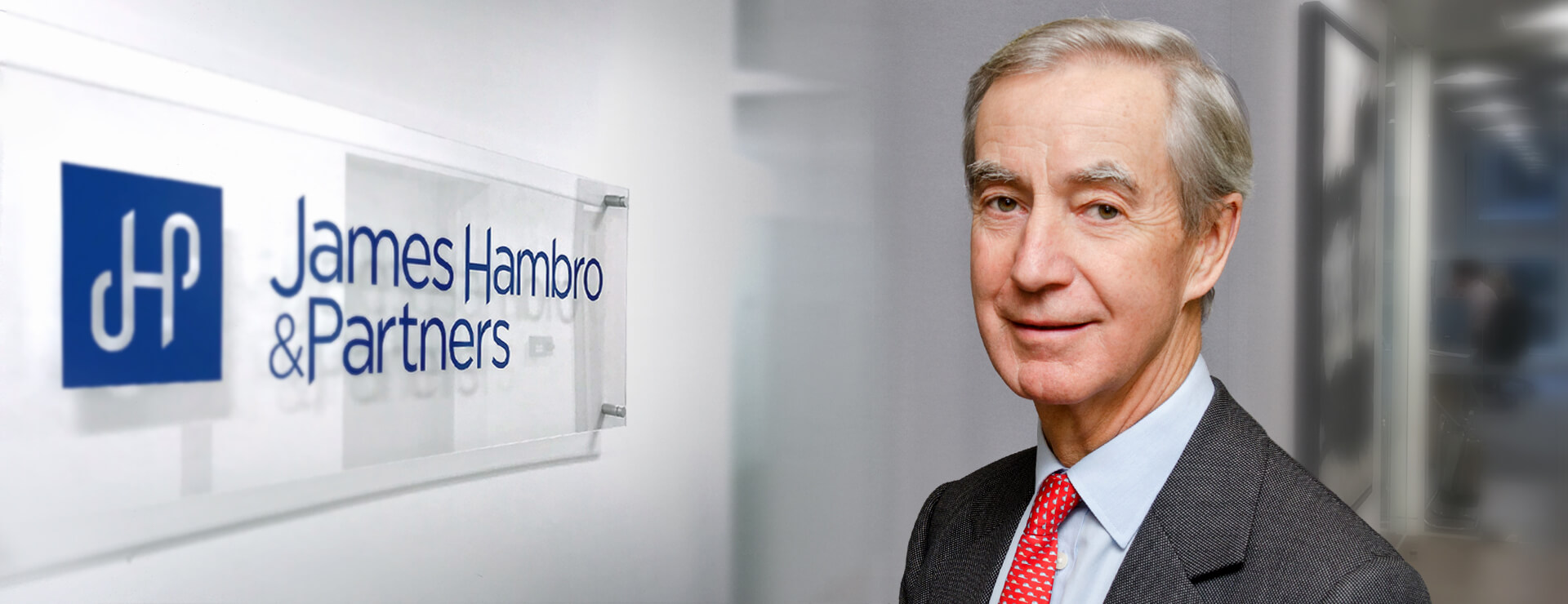
Do high taxes work?
The crowning of Boris Johnson last month and his radical government shuffle position the Conservative party further to the right and put it in even sharper contrast with Jeremy Corbyn’s Labour.

Jamie Hambro, Chairman, James Hambro & Partners
Many commentators are speculating that if Johnson cannot steamroller his EU counterparts into making fresh concessions and he struggles to win the necessary Parliamentary backing to fulfil his ultimate threat of a no-deal Brexit, he may call an election.
High taxes
If that happens, this election will be fought over attitudes not just to Brexit but also to the economy – and in particular, taxation.
Austerity seems at an end and the new Chancellor, Sajid Javid, appears willing to embrace tax cuts to stimulate economic growth. Meanwhile, Labour is promoting policies that hearken back to the 1970s. Clients frequently ask us what impact a Corbyn government might have on their income and savings. It is perhaps worth reflecting on that tumultuous decade and considering how it compares to today.
In 1975 inflation reached 25%, led by the oil price, poor productivity, trade-union-driven wage increases and the country routinely being held hostage by strikes. By late 1979 interest rates hit 17% as Geoffrey Howe, succeeding Denis Healey, grappled to bring inflation under control.
Today inflation (CPI) is 1.9%, below the target of 2%. Meanwhile, the Bank of England base rate is currently 0.75%. Though not good news for cash savers, these are historic lows that have created the conditions for sustainable economic growth.
It is almost unimaginable today, but in the mid-1970s, under Healey, the basic rate of income tax was 35% and the higher rate 83%, which increased to 98% for those with unearned income, such as dividends.
The effects of such eye-watering levels of tax were devastating. Far from increasing tax revenues to the Exchequer, many of the country’s highest earners fled for more favourable tax regimes elsewhere. High tax rates punished ambition.
In his first Budget Howe cut the top rate of income tax to 60% and the basic rate to 30%. By 1988, when Nigel Lawson brought the top rate down to 40%, the tax take actually increased because people found it more palatable to pay than try to avoid.[1]
Who pays?
There is a broad consensus that the wealthiest in society should bear the greatest burden in terms of paying tax. Widening wealth inequality is indeed a concern. But this must be balanced with rewarding entrepreneurship and stimulating reinvestment. It is certainly true that the top 1% of UK earners now earn a greater share of the total UK income. But it is also true that they are paying more in tax. Where the top rate of tax was 83% in 1975, it is now 45%, and yet the share of income tax paid by the top 1% of income taxpayers is now 28% – up 86% from the late 1980s. The rate of income tax on high earners may have decreased, but the total income tax take is the highest it has been for 30 years.
Labour is committed to reinstating the 50% top rate of tax, which risks reversing the overall contribution of our highest earners. Will it work? When the 50% additional rate of tax was introduced by Alastair Darling in 2010, it was predicted to raise an additional £3bn. In fact, it raised only a third of this. The additional rate was then cut to 45% by George Osborne in his 2012 Budget, and by 2016 an HMRC report concluded that this cut had raised an additional £8bn.
The lesson is that raising taxes does not necessarily raise tax revenue, a premise known as the Laffer Curve (named after its author, the economist Arthur Laffer). This is also evidenced by the effects of tax on businesses. Corporation Tax under Healey rose to 52%, compared to 19% today (though to be fair it has taken a very long time to come down). The proportion of money corporation tax raises as a share of national income is largely unchanged, hovering at around 2.6%. The rate is due to be reduced further, to 17%, in 2020, the government aiming to make post-Brexit Britain the most competitive business tax environment in the G20 and stimulate reinvestment and wage growth by reducing the tax burden on businesses.
Corbyn’s manifesto pledge in 2017 to increase Corporation Tax to 26% puts these overall revenues, and Britain’s competitive edge, at risk. It is dangerous to assume that increasing Corporation Tax proportionately increases receipts, and again we can turn to a more recent example of this. Osborne reduced corporation tax from 28% to 20% during his term as Chancellor, and yet the overall take as a proportion of GDP increased from just over 2% in 2010 to almost 3% in 2017.
Those about to embark on their summer holidays may like to be reminded of another action taken by Howe in 1979, when he abolished exchange controls on currency. These had been imposed to protect sterling at the start of the Second World War. They restricted the ability to buy overseas shares and even how much you could take out of the country on holiday – £50 (about £250 in today’s money!). Howe elicited outrage from Labour, which feared the impact on British industry of foreign investment. Suffice to say that John McDonnell’s 2017 party conference speech suggested reintroducing exchange controls for the first time since 1979 in response to a run on the pound if a Corbyn government should get into power.
Never had it so good?
Brexit and political change of the kind we have experienced in the past couple of weeks can leave one feeling as if we live in perpetual turmoil. However, in terms of personal finance it is important to remember that these are historically benign times. Harold Macmillan famously stated that “most of our people have never had it so good”. Only perhaps Boris Johnson in his new spirit of optimism (or bravado) would dare proclaim this in the current climate, but I feel we can at least suggest things could be a great deal worse.
[1]The surcharge on unearned investment income was scrapped in 1985. Dividends are still taxed today, of course, but at separate rates (38.1% for additional rate taxpayers) and with each of us having a personal dividend allowance of £2,000. Furthermore, the tax-free wrapper of investment vehicles such as ISAs provides an environment for investment income to be earned in a tax-efficient manner.
Opinions and views expressed are personal and subject to change. No representation or warranty, express or implied, is made or given by or on behalf of the Firm or its partners or any other person as to the accuracy, completeness or fairness of the information or opinions contained in this document, and no responsibility or liability is accepted for any such information or opinions (but so that nothing in this paragraph shall exclude liability for any representation or warranty made fraudulently).
The value of an investment and the income from it can go down as well as up and investors may not get back the amount invested. This may be partly the result of exchange rate fluctuations in investments which have an exposure to foreign currencies. You should be aware that past performance is not a reliable indicator of future results. Tax benefits may vary as a result of statutory changes and their value will depend on individual circumstances.